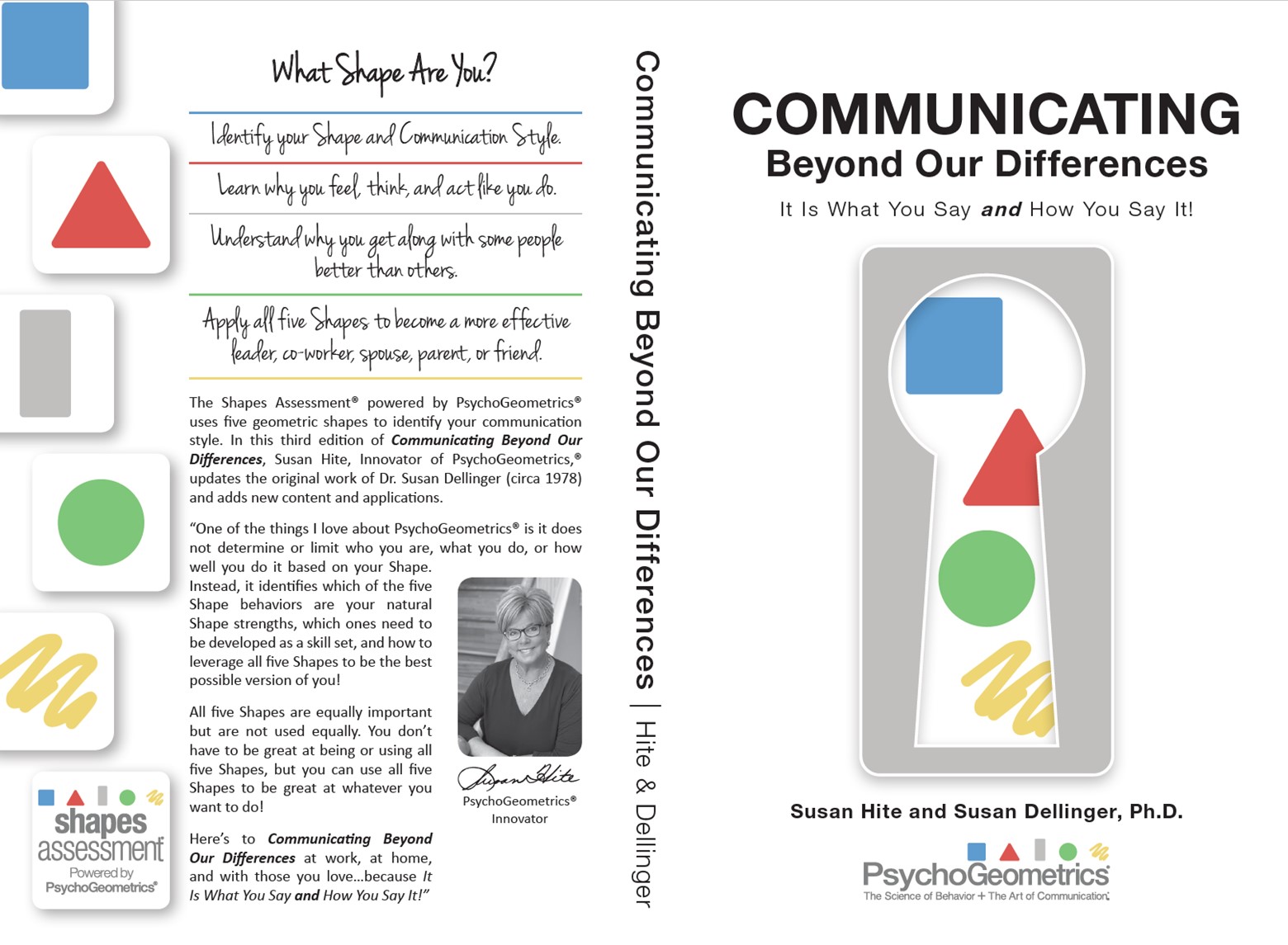

Tuesday, July 23, 2024
In our new book, Communicating Beyond Our Differences, I write a Shapes Summary at the end of the first section on pages 39 and 40. It's the examples of how we problem solve that resonates with me the most, and I thought it might also be beneficial to point out to you, as well.
We all have our unique way of problem-solving, and we typically start the process with our primary Shape.The key is recognizing, understanding, and accepting that every Shape has its unique way of showing care or communicating they want to help.
Here's part of the Shapes Summary below:
The five Shapes are equally important to effective communication but are not necessarily used equally to communicate effectively. It depends on the situation as to which Shapes you will use and how much of each Shape to effectively communicate in the moment.
“One way does not fit all” when it comes to communicating. That’s why PsychoGeometrics is appropriately described as the Science of Behavior and the Art of Communicating.
For example, your partner, family member, team-member, or co-worker comes to you with a problem, and they want your help. Let’s assume that like most people, you want to see the problem solved. Without hesitation, you use your Shape strengths (primary Shape and/or secondary Shape) to communicate how to solve the problem, or at least start the problem-solving process.
A Box might say, with a monotone, calm, and steady voice: “I need to know the details then have time to think about it before I know how to solve it.”
A Triangle might say, with a sense of controlled urgency and high level of confidence, “Here’s what you need to do.”
A Circle might say, with a caring and empathetic tone, “I’m so sorry you are having this problem.”
A Squiggle might say, “I can think of 100 ways to solve that problem! Pick the one that feels right to you!”
Remember that the Rectangle is a transitional Shape and is used as a learned skill set, which is why most people don’t naturally think of starting in Rectangle mode to solve the problem, but the skilled Rectangle’s “Tell me more” is sometimes the very best place to start.
If you would like to read more, and you don't yet have our new book, Communicating Beyond Our Differences, you can order directly from our website. Use access code Book25 and save 25%.

If you want to learn more about other PsychoGeometrics resources, including our online DIY modules, upcoming certification online classes, or how we can customize a team-building workshop for your group, feel free to reach out to me directly. Our team truly loves helping people leverage their Shapes for effective and influential communication!
Susan Hite, CEO, PsychoGeometrics, The Science of Behavior - The Art of Communication